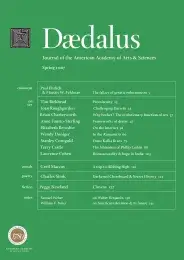The lesbianism of Philip Larkin
“Love variously doth various minds inspire,” wrote Dryden, but for many of us true sexual eccentricity remains difficult to comprehend. We still don’t have the words. Granted, in most modern liberal societies, you can use the terms gay or straight and people will know (or think they know) what you mean. But anything more convoluted than plain old homosexual or heterosexual can be hard to grasp. (Bisexual doesn’t help much: many sensible people remain unconvinced that this elusive state of being even exists.) For a while I’ve kept a list in my head of famous people whose sexual proclivities I myself find inexpressible–so odd and incoherent I can’t begin to plumb their inner lives. Greta Garbo, Virginia Woolf, T. E. Lawrence, the Duke of Windsor, Marlon Brando, Simone de Beauvoir, Michael Jackson, and Andy Warhol have been on the list for some time; Condoleeza Rice may join them soon. Futile my attempts to pigeonhole such individuals: they seem to transcend–if not nullify–conventional taxonomies.
Pious readers will already be spluttering: how presumptuous to ‘label’ someone else’s sexual inclinations! The truth is, however, Everybody Does It, and when it comes to understanding the very greatest writers and artists, some empathetic conjecture regarding the psychosexual factors involved in creativity seems to be necessary. Would life be better if Wilde had not raised the issue of Shakespeare’s sexuality in “In Praise of Mr. W. H.”? If Freud had not explored the homoerotic themes he found in the works of Michelangelo and Leonardo da Vinci?
And it is hard to approach the work of Philip Larkin (1922–1985)–considered by many the greatest English poet of the second half of the twentieth century– without acknowledging his particular brand of sexual eccentricity. The quintessential Establishment poet–he was offered the Poet Laureateship in 1984–Larkin is usually thought of as a straight, if not blokish, man of letters. He portrays himself as such in numerous poems, though not in any vainglorious way. On the contrary, the rhetorical pose usually cultivated–indeed now regarded as typically Larkinesque–is that of shy (if sardonic) English bachelor: reclusive, timid, physically unattractive to women, envious of other men’s romantic successes. At its most poignant, to be Larkinesque is to feel excluded from the family life and ordinary sexual happiness granted to others. (“For Dockery a son, for me nothing.”) For those who love Larkin, this rueful evocation of sexual loneliness, tempered always with subtle intransigence and a wildly uncensored wit, is just what they love him for:
Sexual intercourse began
In nineteen sixty-three
(Which was rather late for me)–
Between the end of the Chatterley ban
And the Beatles’ first LP.
Despite tiresome overquotation the rhymes never go stale, nor do they lose their odd power to console. Yet, however bleak the (real or imagined) erotic life, Larkin’s ‘normality’ would seem to be a given. As the poet has his frustrated stand-in say in “Round Another Point” –an unpublished débat between two young men on the subject of women, sex, and marriage–“I want to screw decent girls of my own sort without being made to feel a criminal about it.”
. . .
